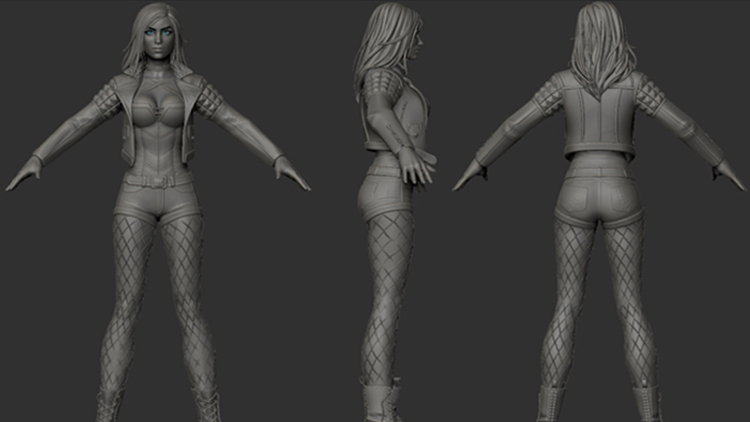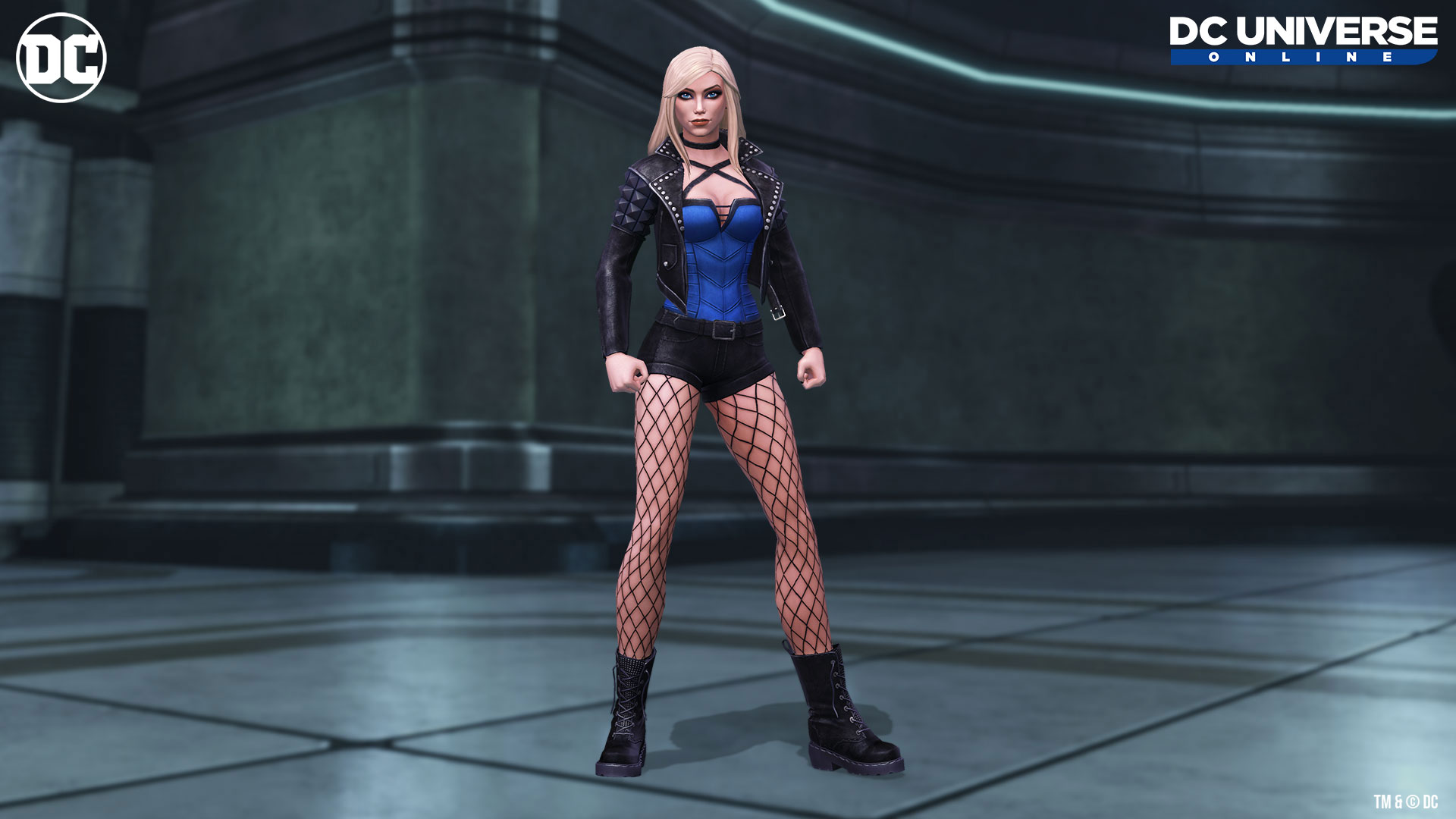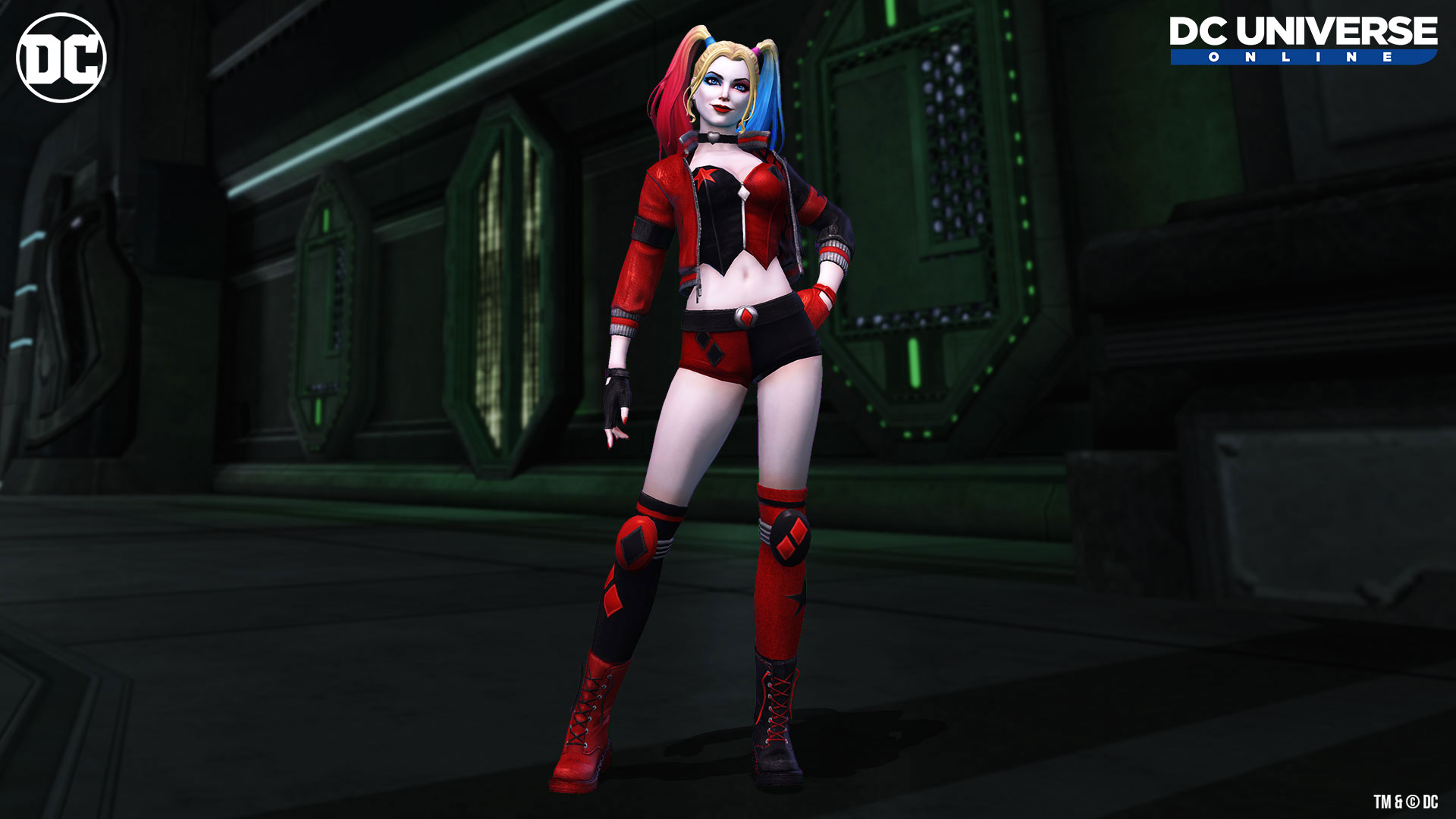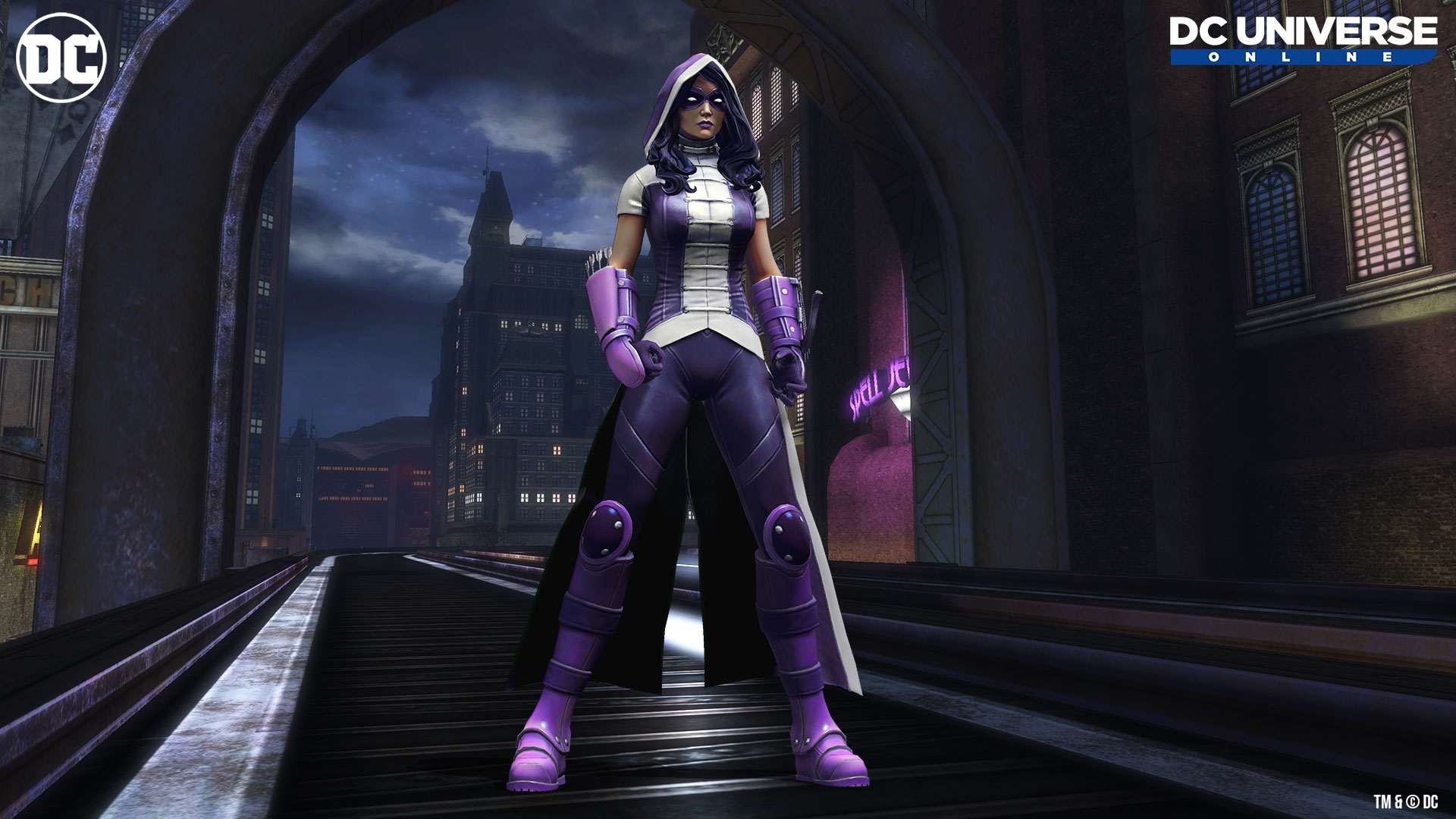4/8/20 9:00 AM

Welcome heroes and villains to another Birds of Prey Dev Diary. Remember, the new episode launches April 16, 2020!
Today we are here with three of our character artists - Glitter, JayHawk, and Jazz - to look at how new and updated DC characters make it into the game. Have fun!
Welcome, everyone. Starting with the basics, can you tell us what your roles are and how long have you been on the team?
Glitter: Hey ya’ll, I’m Glitter. I’ve been a Character Artist working in the shadows on DCUO for over four years now. (No really, we keep it dark on the art side, so our computers don’t get glare while we work. It’s like the Batcave. With snacks.)
We work on everything from player gear styles to hair to NPCs. We’re generally shy, but we’ll do our best to answer!
Jazz: Hi Hi, I’m Jazz. I am also a Character Artist here on DCUO. I’ve just started and only have a couple of months under my belt here. There is still a lot for me to learn, but I do my best to help everyone out.
JayHawk: Hello! I’m Jayhawk and I’ve been a Character Artist on DCUO for almost 4 years, as well. Time flies.
What does it mean to be a Character Artist? What things do we see that you make?
Glitter: Being a Character Artist is a very cool job, but it’s also a lot of multitasking and meticulous detail-oriented work. We sculpt, retopologize, UV map, bake, create textures, paint, skin weights, use databases, test, critique, troubleshoot constantly, fix bugs, and sometimes even work to concept what we are making - all while trying to stay true to the comics.
I’ve made a lot of things, but some that come to mind are the Shim’Tar Regalia, Starro, the Tattered Cape, and the Batman Who Laughs. Most recently, I also made Black Canary and Harley Quinn. I’m so excited to see them in game!
Jazz: For me, being a Character Artist means being part of a story. I’ve always loved video games and I become mesmerized by the characters and stories of the many different games I’ve played. To me, creating the characters allows me to be a part of that big story that they are in, and its very exciting.
As far as what I make that's out now, I made the Skeleton form change for the past Halloween event. That was really fun. Other than that, I help by taking care of player gear, integrating completed work into the game, and texturing. The best way I can help is to do what I can and learn along the way.
JayHawk: In gaming, “Character Artist” usually means a 3D modeler who builds character-related assets. Everything from NPCs to the equipment you put on your toons to the monsters and minions you fight. If it has a face and moves around, we probably had something to do with it.
What tools or software do you use most?
Glitter: Oh dear, so many. In fact, we often have them all up at the same time to switch between them all. The ones we use most are Maya, Zbrush, 3Dcoat, Photoshop, xNormal, and Unreal.
How did you get into the industry and find yourself at Dimensional Ink?
Glitter: I was super lucky. [Editor's Note: I think we all feel this way.] I was given the opportunity to be an intern here while still in school. They needed an extra hand, so when my internship ended I was offered a job! My coworkers were very kind and helped me a lot.✨
Jazz: I also feel lucky to have ended up here. It was really hard breaking in and getting anyone to look at my portfolio, but I’m glad the hard work paid off.
JayHawk: I got my first job in gaming when I was still in college. I was working at a small indie studio here in Austin when a friend told me about a position that was open at Dimensional Ink. I really love DC and especially the DC characters, so I was really interested in working on DCUO. I showed the character team my portfolio, did an interview, and kablam! …not a very exciting story, I guess, that's just kind of how it usually happens. But it was extremely exciting for me. It’s pretty common to find out about fun opportunities from people you used to work with.
Do you have any advice for folks out there considering a career as an artist in the game industry?
Glitter: Like JayHawk was saying, make friends in the industry and stay connected. Constantly get critiques on your portfolio. It can be very difficult as an artist to get into the industry. Networking and keeping your portfolio up to date and constantly reviewed by professionals is your best bet. Also, it does take some luck, but it will happen if you keep at it.
Jazz: I agree with Glitter's advice. Networking and constantly working on your portfolio is key. For someone that had a hard time recently getting a job, just never give up. You’ll have your ups and you’ll have a lot a lows, but if this is the path you want to take then do things that keep that passion alive and keep moving forward. Play video games, look at the very top artists that you follow and analyze their work. Build a standard or goal you want to achieve and shoot for it. Keep trying and keep that inspiration going.
JayHawk: Along with networking and working on your portfolio, I‘d like to add that being an artist who loves games isn’t the same thing as being a game artist. I’ve met some amazing artists who have tried to get their start in the industry but struggle because they aren’t in love with the type of work we do.
It takes a lot of passion to maintain the skills we need to do our job, a lot of work in a ton of different tools, and it really is a special process creating in this 3D space. So learn early what sort of daily tasks you would end up doing in your dream position and make sure that sounds like something you would actually want to do all day every day. If you know you’d love it then get that portfolio together!
Okay, let’s talk about creating iconic DC characters and especially about upgrading existing ones. What’s the first step when this lands on your plates?
Glitter: Well, first our creative director and the designers look to see what NPCs will be needed for the content - how many and how iconic they are can determine how we budget our time. The team pitches ideas and we get DC’s approval on the character concepts before we get started on making them.
Time is a huge obstacle in how many refreshes or repaints or new characters we can make in the cycle for new content or a new episode. Making a new NPC can take up to 18 days depending on the complexity and problems that sometimes arise.
Once we figure out the time we have, internally we put together a lot of DC reference and real-world reference to help us interpret the comics in a 3D space. Sometimes we have Megzilla (2D Artist) make us a concept and other times we work straight from the comic reference. It varies each time and depends on what specifically we are making.
A new DC character or upgrade usually gets the whole works: concept, comic reference, and real-world inspiration.
How much do you reference the comics directly?
Glitter: All. The. Time. Comics are our main reference and source, but again we also look for real references to help us interpret what the 2D shapes could look like in 3D. It often doesn’t translate very well, because artists for the comics have very different priorities and requirements. They don't necessarily need to care what a costume looks like from every angle, and they definitely don't have to worry about physics in a 3D space. So, we also improvise a lot.
With Birds of Prey, we have five upgraded DC characters in Black Canary, The Huntress, Poison Ivy, Harley Quinn, and Catwoman. How did you manage to tackle all of these for the same episode?
Glitter: We try to get started months and months in advance of the episode and also to spread out the work between us all. I actually ended up making Black Canary and Harley Quinn for this round. We sometimes can outsource part of the process, and in this case we were able to send Harley’s gear out so that I could squeeze in refreshing Catwoman. I didn’t sculpt Poison Ivy, our previous senior artist did a beautiful job sculpting her, but I put her together and textured her for this episode. So, I guess she is my step-daughter?
Iconic DC characters are not the whole job, though. For Birds of Prey, I also worked on various minions and other NPCs for the content, while JayHawk created the Oracle gear, while Jazz worked on texturing and integrating The Huntress gear, and so on. Teamwork!
For even one of these DC characters, I know there must be a ton of steps getting from comic book inspiration to the character walking around in a 3D space in the game. Can you take us through the process, and maybe shows us some of the major WIP versions along the way?
Glitter: There are many, many steps to getting a character in game, but to simplify I will use Black Canary.


How do you approach the new version of a DC character, in terms of tone and feel?
Glitter: For Black Canary, her look and attitude in the comics has really evolved since we launched. She's even bigger and well-known, and we wanted to bring all of that evolution into our version in the game.
I really wanted to make her with a punk/rock feel, and a bit more modern. I also interpreted the reference with more of a rock-ish feel to her clothes (like the studs and spiky jacket shoulders), so she could have a bit more detail to her design. Her makeup in the comics is a bit old school, so we ended up with more of a smoky eye and a nude lip – which I really love. I’m very envious, every time I attempt a smoky eye I just look like a raccoon.
Harley Quinn was also a fun challenge – it was important to keep her very close to the Rebirth comic reference, but also I wanted to make sure that she was fun and cute with her style and hair. Sculpting her pigtails was super fun and I think that iconic pink/blue ombre she has really gives her that modern feel.
Are there certain elements or choices that stand out to you as an artist that an average looker-at-art like me probably wouldn't directly notice or have the vocabulary for?
Glitter: There are so many technical hurdles to work through. Player gear has way more technical hurdles considering all the pieces of gear in a full set, how many thousands of styles we have and will make in the future, and how they all have to work together since the player can choose any combination. NPCs have their own hurdles, especially in matching the reference and our vision.
We have to determine clothes and design that will work with our animations and really think about how things will bend and move. We have (somewhat) limited cloth physics, so we are unable to do a lot of things without getting into a lot of clipping. If the low poly phase of making the NPC has issues it can lead to texturing and skinning problems later in our process. It’s a fun and challenging system to troubleshoot through and changes all the time depending on the character design.
JayHawk: Looking at a piece of comic art and interpreting how lighting should react with the surface of a character’s costumes is a huge part of creating a character for a game. A hero could be wearing a cool set of armor in a comic book but what is that armor made of? Is it shiny? Is it reflective? Is it brand new or should we add dirt and scratches? How might it look in a dark cave compared to how might it look in bright and sunny Metropolis? When you forget this step you end up with a character who looks flat and doesn’t quite fit in with the rest of the characters in game.
This was important when I was working on Oracle’s robot. The comic art made it look like she was made of metal, but what kind of metal? Then on top of that parts of her needed to glow, so how does the metal react to that glowing? It took some experimenting to get her to look right.
Are there any elements that surprised you or ended up very different than you expected by the end?
Glitter: I’m surprised how many players want Black Canary’s jacket! Okay, not really that surprised. I also would like it myself in real life.
Finally, just in your own response looking at these characters finished and in-game, what comes up? Is there something you are most proud of here?
Glitter: I really love seeing all the NPCs I worked on in game all together in our content, shoulder to shoulder. It’s really cool to see them all together. I also was really happy Megzilla and I were able to get emblems slots onto the Harley gear – hopefully we can do more gear sets with this option in the future!
JayHawk: I grew up obsessed with DC Super Heroes and Super-Villains as a kid, so when I finish a character it really feels like I’m getting to be a part of this thing that’s had a big impact on me my whole life. And seeing our players get as excited as me makes it even better. It's a shared experience that ends up being really special.
Thanks again to Glitter, Jazz, and JayHawk for joining us today, and thank you for getting back to work real quick-like so we can have more awesome DC characters and gear soon.
And again, remember Birds of Prey launches with a ton of updated DC characters and gear styles on April 16, 2020, on PlayStation 4, PC, Xbox One, and Nintendo Switch.


